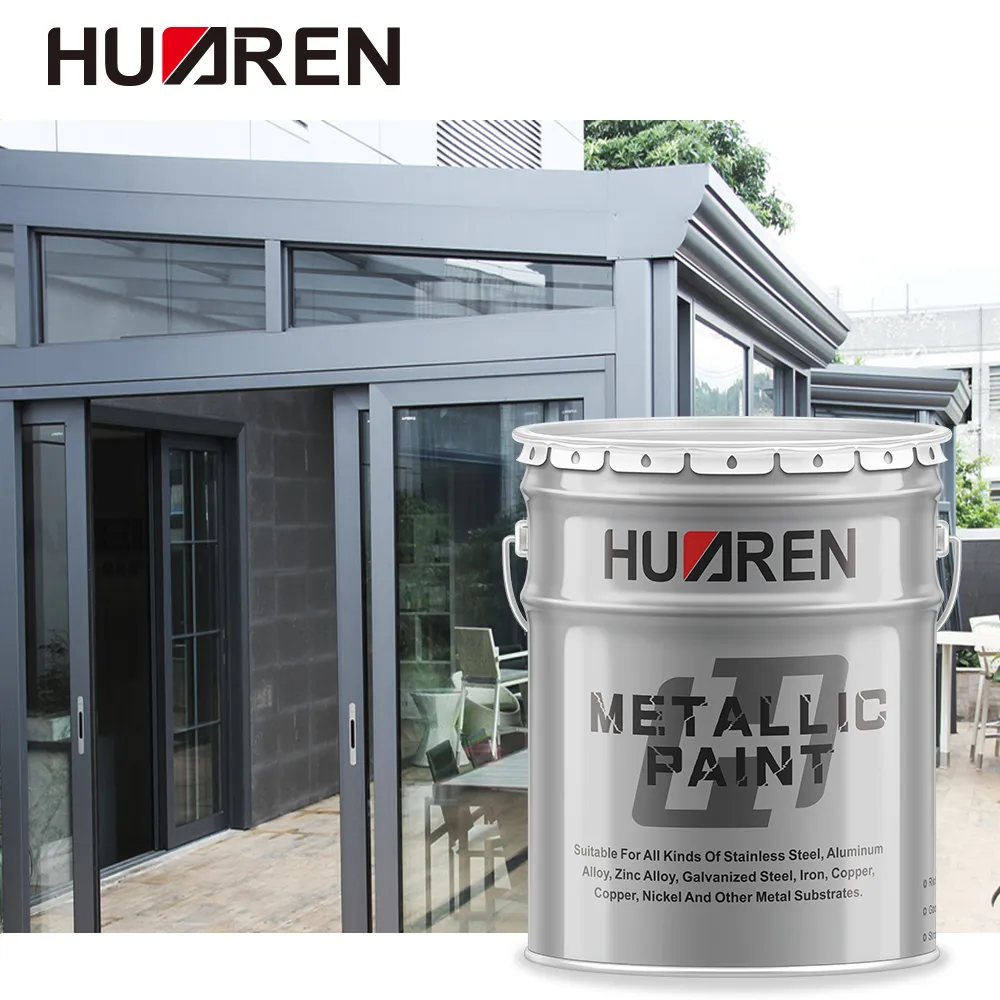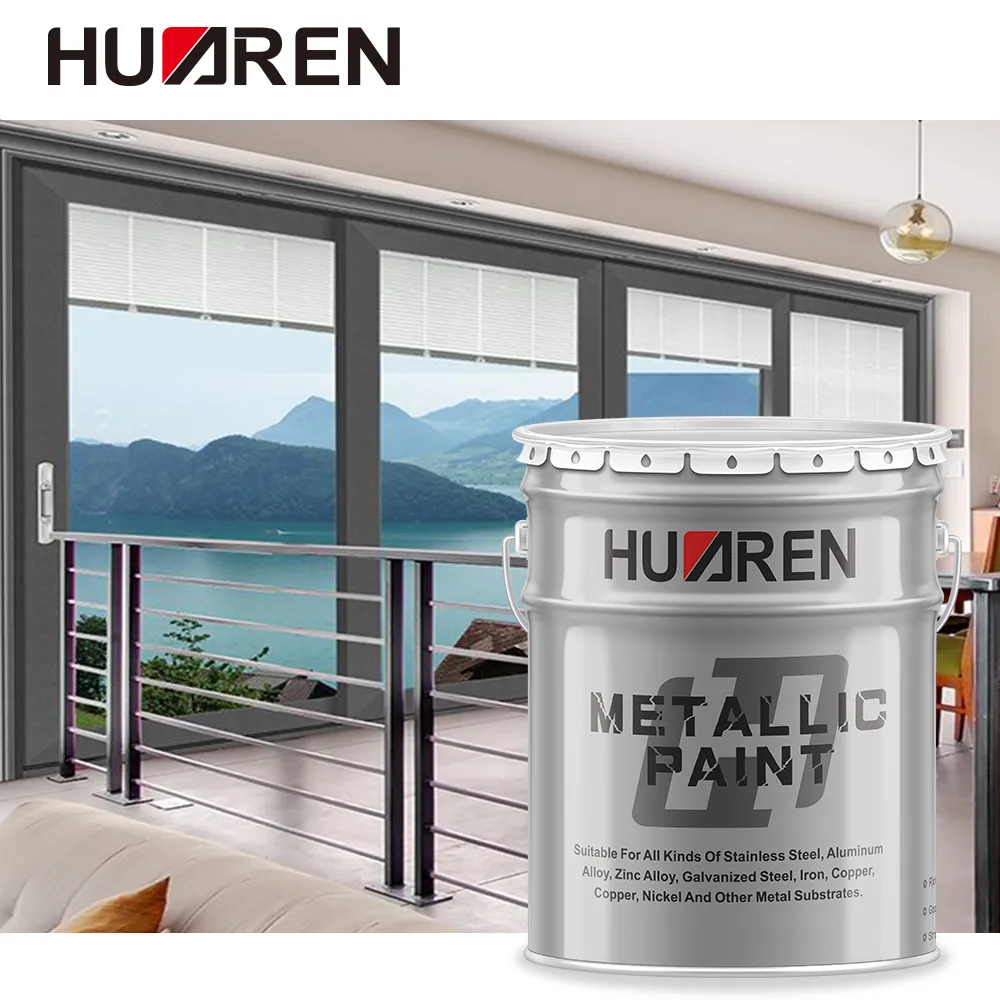Polyurethane Enamel Paint is a high-performance coating known for its excellent durability, gloss retention and chemical resistance. It is widely used in the coating of automobiles, ships, furniture and industrial equipment, especially on surfaces that need to be exposed to harsh environments for a long time.
This article will introduce the composition, characteristics, application areas and differences between polyurethane enamel paint and other coatings in detail to help readers better understand this important coating variety.

What is Polyurethane Enamel Paint?
Polyurethane enamel paint is a high-performance coating with polyurethane resin as the main component, which has strong weather resistance and abrasion resistance. It is usually applied to surfaces that require high gloss and durability, such as exterior coatings of automobiles and ships. This type of coating is widely used in outdoor and industrial environments due to its superior chemical resistance, UV resistance and mechanical properties.
What are the ingredients of polyurethane enamel paint?
The main ingredients of polyurethane enamel paint include:
● Polyurethane resin: This is its core component, which determines the physical and chemical properties of the coating. Polyurethane resin has excellent wear resistance, elasticity and chemical corrosion resistance, and can remain stable under extreme conditions.
● Pigments: used to provide color and opacity to the coating. High-quality pigments can enhance the hiding power and weather resistance of the coating.
● Solvents: help dilute the paint and make it easier to apply. Commonly used solvents include toluene, xylene, etc. The coating solidifies after the solvent evaporates.
● Catalysts and hardeners: Catalysts promote chemical reactions in the coating, allowing the coating to cure quickly. Hardeners help the coating form a hard surface and improve its durability.
● Additives: Additives are used to adjust the gloss, fluidity and scratch resistance of the coating.

What are the characteristics of polyurethane enamel paint?
Due to its unique chemical structure, polyurethane enamel paint exhibits a series of excellent properties, which make it popular in various coating projects.
Strong weather resistance
Polyurethane enamel paint has extremely strong weather resistance and can resist aging from long-term exposure to sunlight, rain and ultraviolet rays. This makes it very suitable for outdoor coatings, such as surfaces that need to be exposed to outdoor environments for a long time, such as automobiles, ships and building exteriors.
Wear and impact resistance
Polyurethane coatings excel in physical strength due to their strong molecular structure. It is resistant to wear and scratches, and is not prone to cracking or flaking when subjected to impact. Because of this, it is often used for surface protection of heavy machinery and industrial equipment.
Chemical resistance
Polyurethane enamel has excellent chemical resistance and can resist common chemicals such as acids, alkalis, greases and solvents. This makes it particularly suitable for environments that are susceptible to chemical attack, such as industrial equipment, storage tanks and laboratory equipment.
High gloss and durability
Polyurethane coatings usually have extremely high gloss, and the gloss can remain unchanged for a long time. Unlike some coatings that easily lose their gloss, polyurethane enamels have a long-lasting gloss and are not easy to fade even after long-term exposure to ultraviolet rays.
Temperature resistance
Polyurethane enamel has a certain degree of high temperature resistance and can maintain its integrity and functionality at high temperatures. Therefore, it is widely used on the surfaces of equipment that need to withstand higher temperatures, such as engine parts and industrial furnace housings.

What are the application areas of polyurethane enamel?
Due to its many excellent properties, polyurethane enamel has a wide range of applications in many fields.
Automotive industry
Polyurethane enamel is widely used in automobile manufacturing and repair, especially for exterior painting of car bodies. Due to its excellent weather resistance, scratch resistance and glossiness, it can keep the car body beautiful for a long time and not be eroded by wind and rain.
Ship coating
Ships are often attacked by salt, sunlight, rain and waves in the marine environment, so the coating requirements for the hull are extremely high. Polyurethane enamel can not only withstand the harsh marine environment, but also maintain its gloss and beauty for a long time.
Building exterior wall coating
Polyurethane enamel is also widely used in the protection and beautification of building exterior walls. It can effectively prevent the wall from being damaged by factors such as sunlight, rain, pollution, etc., while keeping the building's color bright.
Industrial equipment protection
In the petrochemical, manufacturing and power industries, industrial equipment is often exposed to harsh working environments. Polyurethane enamel can provide long-term protection for these equipment, prevent corrosion and wear, and extend the service life of the equipment.
Furniture coating
Polyurethane enamel is also widely used in the coating of high-end furniture. Its high gloss and scratch resistance make the furniture surface more beautiful, while being able to maintain its bright appearance for a long time.
What is the difference between polyurethane enamel and other coatings?
There are significant differences between polyurethane enamels and other types of paint, such as acrylic paint and epoxy paint.
Polyurethane enamel vs. acrylic paint
Acrylic paint is also a highly weatherable paint, but it is slightly inferior to polyurethane enamel in terms of abrasion resistance and chemical resistance. Acrylic paint is less expensive and is suitable for surfaces that do not require high resistance to scratches and chemical erosion, while polyurethane enamels are more suitable for surfaces that require high-strength protection.
Polyurethane enamel vs. epoxy paint
Epoxy paint performs well in chemical resistance and adhesion and is often used in environments that require strong chemical resistance, such as tanks and pipes. However, epoxy paint is not as weather-resistant as polyurethane enamel and is prone to chalking when exposed to sunlight for a long time. Therefore, polyurethane enamel is more suitable for outdoor coatings, while epoxy paint is often used for coating indoors or in confined environments.

How to use polyurethane enamel correctly?
Surface preparation
Surface preparation is a very critical step before applying polyurethane enamel. Whether it is a metal or wood surface, it needs to be thoroughly cleaned to remove dirt, grease and oxides. For metal surfaces, it is best to sandblast or polish to ensure that the paint can adhere firmly.
Application Methods
Polyurethane enamels can be applied by brush, roller or spray. Spraying is the most common method because it can evenly cover large surfaces and form a smooth film.
Drying and Curing
Polyurethane enamels have a fast drying time and are usually dry to the touch within a few hours. However, full curing may take several days, depending on the ambient temperature and humidity. During this time, the coating should be protected from mechanical stress or contact with chemicals.

